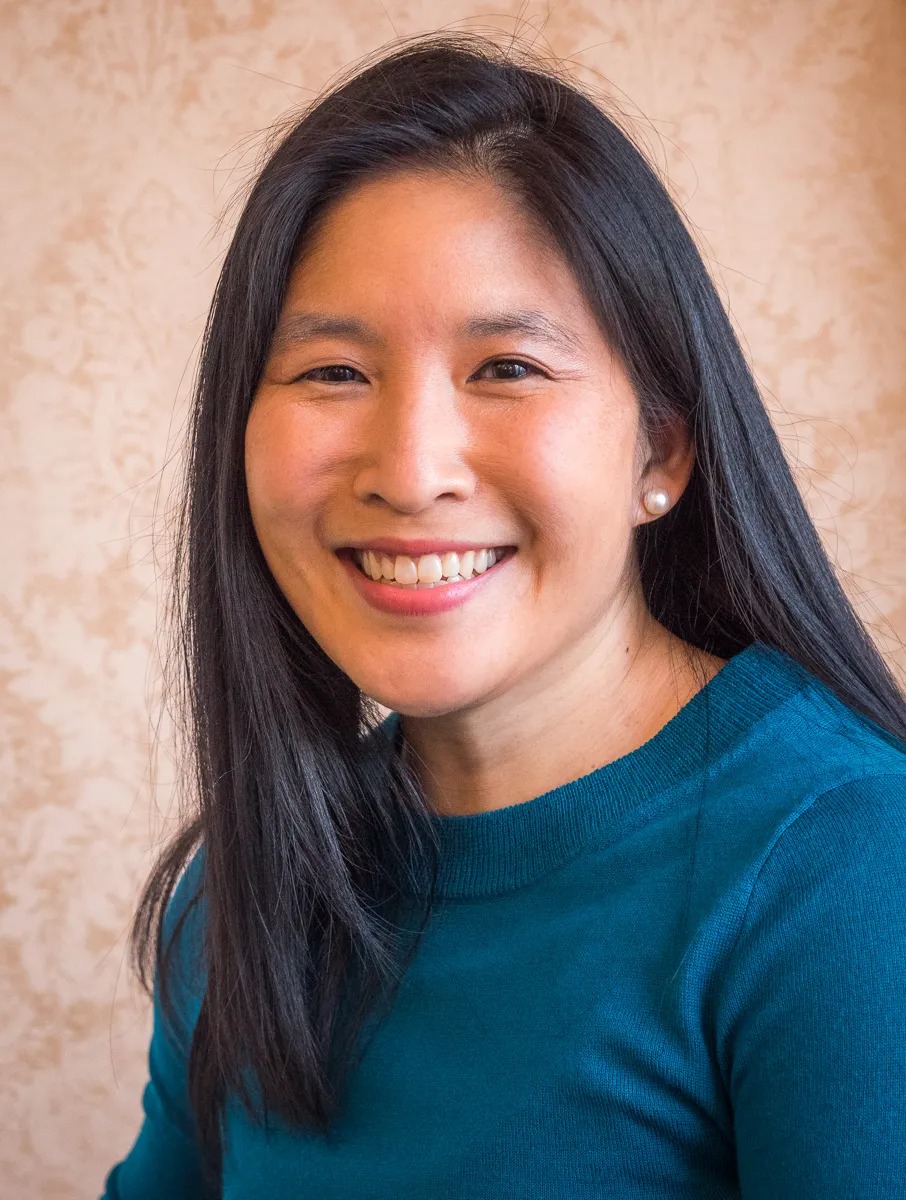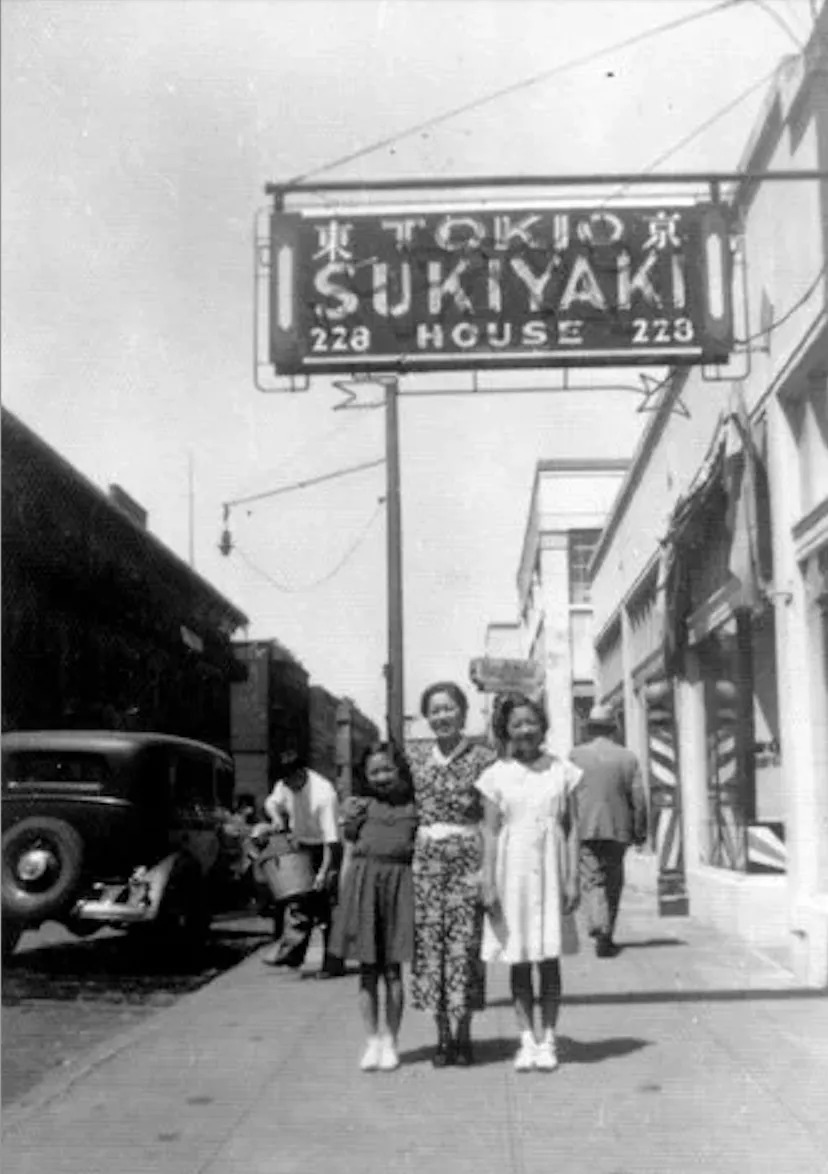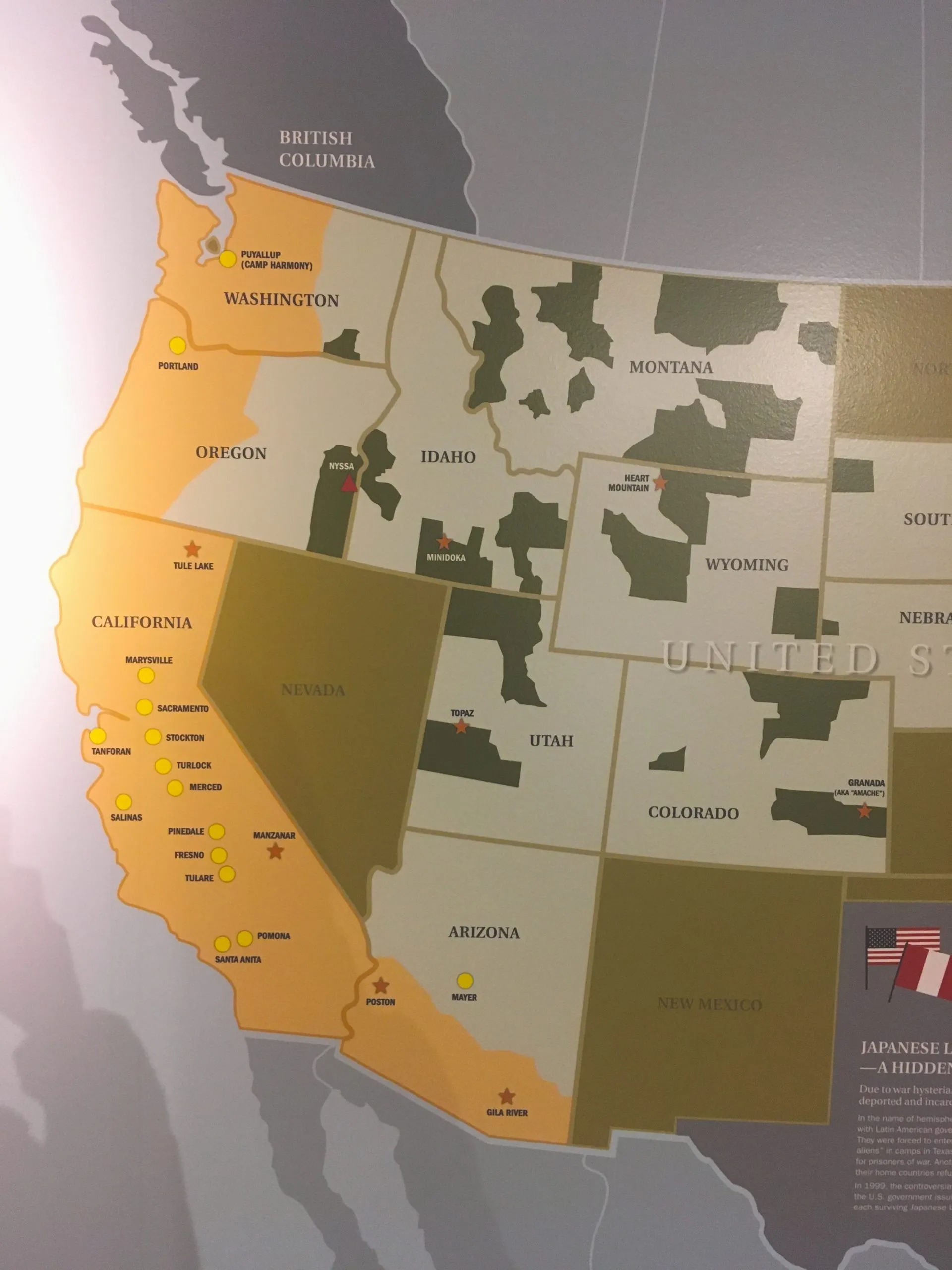There are two places in Portland with deep ties to Japan. One is the Japanese American Museum of Oregon (JAMO), formerly known as the Oregon Nikkei Legacy Center, which has served as a community center and a place to educate and explore the Japanese American experience and its role in Oregon’s multicultural community. Visitors can find archival materials about Japantown as well as exhibits about World War II American concentration camps for people of Japanese descent.
The other is the Portland Japanese Garden, known as one of the premier Japanese gardens in the country among the more than 300 Japanese gardens in the U.S. The park consists of eight different garden styles, including a tea house and a karesansui (sand and stone) garden. When it reopened in 2017, which coincided with the 50th anniversary of its opening, three new buildings were constructed, including a gallery and visitor center designed by architect Kengo Kuma.
We interviewed Jana Iwasaki, a fourth-generation Japanese American and board member of the Japanese American Museum of Oregon about the little-known history of Japanese Americans in Portland, which now attracts many visitors and residents from Japan.
According to records from JAMO, there were only 25 people of Japanese descent living in Portland in 1890. Twenty years later, that number had grown to 1,200, with many more Nikkei living in the rest of the state. Japantown, or Nihonmachi, as it was called by the Issei, was carried over to the next generation, and a Japanese American community was formed with over 4,000 people living there in 1940. However, World War II broke out, and on February 19, 1942, President Roosevelt issued Executive Order 9066, which authorized the military to send Japanese Americans to concentration camps. During World War II, 120,000 Japanese Americans were interned in 10 concentration camps throughout the United States. After the war, Portland’s Japantown never fully recovered, and many of the Nikkei interned during the war settled in other cities, with few returning to the area.

Jana Iwasaki
A Yonsei, is a board member of Japanese American Museum of Oregon (JAMO). Formerly known as the Oregon Nikkei Legacy Center, the mission of JAMO is to preserve and honor the history and culture of Japanese Americans in the Pacific Northwest, educate the public about the Japanese American experience during World War II, and advocate for the protection of civil rights for all Americans.
https://jamo.org/
Photography Rich Iwasaki
Japanese American history in Portland
−−I heard that when your grandfather was alive, he gave interviews and spoke on a few occasions to share his own experiences and the history of Japanese Americans at places such as the Portland State University, the Oregon Historical Society, and local libraries.
Jana Iwasaki:My grandpa was the oldest of eight siblings. He was 30 years old at the time and helped navigate the family during a difficult time. They ended up in the Japanese American farm labor camp in Eastern Oregon. There was a shortage of farmers because men were drafted to the war. At the camp, they farmed onions and sugar beets. A byproduct of the sugar beets was used to produce munitions and synthetic rubber and aided the war effort against Japan. At other camps, there was a total loss of the family unit because teenagers would eat with their teenage friends and the younger children would just start making new friends. My grandpa thought it would be a better situation at the farm labor camp, because they could maintain their family unit. They lived in a tent with a stove and prepared their own meals. Their experience was different from those who ended up in other concentration camps.
My grandpa’s younger sisters were school-age, and some of them had to transfer colleges from the West Coast to Idaho. Depending on the age, the experiences were so different. Some of his younger sisters said that they had fun as they made new friends. They already had a hard life farming and they felt that they were doing fewer hours farming in this particular situation. That was an interesting perspective to hear. Regardless of that, the overall picture was bleak since they lost all their civil rights.
My two great-uncles, my grandpa’s younger brothers, were both drafted into the US Army during the war. In 2011, President Obama awarded the Congressional Gold Medal of Honor to the Japanese American veterans in Washington D.C. There was a total of 33,000 Nisei soldiers, who fought in the 442nd Regimental Combat Team , the 100th Battalion, and the Military Intelligence Service.
−−To remember the discrimination and humiliation that they were subjected to and to prevent repeating the same mistakes, Japanese Americans designated February 19th as the “Day of Remembrance” and hold events across the United States every year. What kind of activities have you participated in?
Iwasaki: I joined the “Manzanar Pilgrimage” with my family and friends, visiting the concentration camps of Minidoka in south-central Idaho, Tule Lake in northern California, Manzanar in California, and Heart Mountain in Wyoming. It was a very unsettling experience. The harsh weather conditions of these places persist today. Some places are so brutally hot in the summertime, but also windy. I wasn’t there in the winter, but they also talked about how cold it was in the winter. Most people were from Southern California and were not used to even having any type of cold weather. To experience the weather was one thing and to listen to people’s personal stories was so moving. At Manzanar, I heard a woman speak about her father, who left his family in the camp and moved to Japan. I can’t even imagine how devastating that must have been for the family.
The U.S. Government asked everybody in the camps to answer loyalty questionnaires. Some of them answered no to those questions. They were often young men, who were labeled as the “No-No Boys.” Today, we consider them civil rights heroes. But at the time, the “No-Nos” were seen as bringing shame to their families by disobeying authority. Many of the “No-Nos” did not object to serving their country but said they would serve only if the government released their families from camps. In the end, some of them went on to serve after World War II, in the Korean War. I heard one story about an Issei mother who committed suicide out of shame because her son was a World War II draft resistor. It should also be noted that it wasn’t until 2002 that the Japanese American Citizens League officially apologized to the draft resistors. I was shocked at how recent this apology was issued. In that sense, there were aspects that I had never considered before, which were brought to my attention during these pilgrimages.
I found the camps at Tule Lake and Heart Mountain particularly memorable. Tule Lake had a jail in it. They called it “the jail within the jail,” jokingly, because everyone was in a prison camp. However, they put another prison inside. I don’t think there was even a locked door. The prison inside is where they sent people that were the most disobedient and problematic. One characteristic of Tule Lake was that there were a lot of activists and community leaders.
At the Heart Mountain pilgrimage that I attended, two prominent government leaders presented together. Former Congressmen Norman Mineta and Alan Simpson had successful careers in politics representing California and Wyoming respectively. They had an incredible story to share. When Mineta was incarcerated at Heart Mountain, his Boy Scout leader invited several troops to do a jamboree. Finally, one troop accepted their request. Mineta and Simpson were paired and ended up completing a series of contests together. Years later, when Mineta was elected the mayor of San Jose, Simpson wrote him a note asking if Mineta still remembered him from years ago. This led to a lifelong friendship. Simpson is a Republican and Mineta, who passed away last year, was a Democrat. They were opposites politically but worked together on numerous issues.
There are amazing stories from Heart Mountain. In Little Tokyo in Los Angeles, there’s a confectionary, Fugetsu-Do which still exists today. It’s a family business that is 120 years old. The family was at Heart Mountain, and people would bring them bits of rationed sugar from which they would make professional treats. Another industrious family, the Hiraharas, built a darkroom under their barrack, preserving history at Heart Mountain.
The best part of attending pilgrimages was sharing the experience with Nisei relatives and family friends who lived through that part of history. I have deep respect and admiration for their perseverance, as well as gratitude for them paving the way, making it easier for later generations.
The most significant for Japanese Americans was the reparations bill. In 1988, the government gave $20,000 to every survivor and offered a formal apology.


Right: An exhibition at JAMO shows that there were restaurants, laundries, public bathhouses, dentists, physicians, and hotels run by Japanese Americans in Portland before World War II.
−−There are some sad and upsetting parts in the history of Japanese Americans. What specific lessons can we learn from this history to look forward to a more hopeful future?
Iwasaki: My great-grandpa started farming in Hillsboro in 1916, and thanks to the kindness of neighbors, the Freudenthals, our farm Iwasaki Bros still exists on that same property today. The Freudenthals were German American dairy farmers. Since the US was also at war with Germany, they empathized and asked how they could help. My family was building a new house in 1942 and when it became apparent that they would be forced to leave, they moved in for a few weeks to experience it, even though construction was not finished. My grandpa arranged that the town doctor would rent the house, however, the doctor didn’t initially pay. The Freudenthals intervened to collect the rent and watched over the property.
The Freudenthal family was involved with the Lutheran church in Hillsboro. In a gesture of gratitude, my grandpa’s younger brothers Akira and Arthur helped obtain pieces of red rock in Central Oregon, which were used to build the church. They used dynamite to break them into transportable pieces and hauled them back to Hillsboro in farm trucks. This building still exists today on Main Street. The church congregation outgrew the size of the building, which is now part of the Hillsboro Parks and Recreation Department and is used for concerts, receptions and events. The Freudenthal family ended up selling their property to their church, and the friendship with their family and the congregation exists today. This is an example of individuals coming together in friendship and allyship, looking out for one another.

“Your story is our story.” A diverse group of artists is active in uncovering the little-known history of Japanese Americans.
−−Looking back, there are many Japanese and Japanese American artists such as photographer Frank Matsura (1873-1913), painter and illustrator Miné Okubo (1912-2001), and Valerie Otani (1947-2020), a founder of Oregon Nikkei Legacy Center and artist. Matsura traveled to the U.S. during the Meiji era and took photographs of Americans of all races, including the first nations people, white people and black people. Miné Okubo is known for her book Citizen No. 13660, which describes her wartime experiences in a Japanese American concentration camp with illustrations, and is still read today as a valuable source of vivid information about her experiences. One of the most significant contributors to Portland’s Nikkei community was Valerie Otani. Who impacted you the most?
Iwasaki: Valerie Otani directly impacted me as a founder of both Portland Taiko and the Oregon
Nikkei Legacy Center, which was renamed the Japanese American Museum of Oregon in 2019. Her family background influenced her work. She was talented at bringing people and their ideas together. A public art piece by Valerie that honors Japanese American history in Portland is Voices of Remembrance. This artwork is at the site of the Portland Assembly Center, where the Japanese Americans in 1942 were first sent. Today the site is the Expo Center, which many visit for various events. The sculpture is a torii gate with metal tags that represent each family who was incarcerated. When the wind blows, the tags create a gentle sound like chimes. The sculpture is currently being restored and will be placed again in 2025.
−−There are non-Japanese American artists such as filmmaker Beth Harrington and artist Julian Saporiti that carry on the legacy of Japanese Americans. Harrington is currently working on a documentary, Our Mr. Matsura, which traces the life of the aforementioned photographer, Frank Matsura. The Nashville-born Vietnamese American songwriter and scholar Julian Saporiti who currently resides in Portland, has launched a music project called No-No Boy, and released several songs inspired by his family’s history of surviving the Vietnam War and the experiences of Asian Americans, including those of Japanese descent. Did you learn something new from them?
Iwasaki: There is always much to learn. Regarding Beth Harrington’s work, I had never heard of the subject of her film, Frank Matsura. He was an interesting man and an example of a Japanese immigrant becoming part of the local community, leaving an imprint. There were many Issei who were interested in being part of the new community that they were in and managed to integrate in a positive way. In Frank Matsura’s case, through his photography, he documented life in the surrounding area. We wouldn’t know as much about life back then without his pictures. He truly immersed himself in the local area and documented day-to-day life, including people of multiple First Nation tribes. It’s exciting to learn about an early Japanese American who appreciated culture and diversity within one community to that extent.
No-No Boy delves into heavy topics for its song material. At performances, they show graphic images, old photos. One song really hit me with the image of a Japanese American man, during the war-time era, who laid down on the train tracks. Again, I was moved to think about the emotional side of war and racism and how difficult it must have been for all those incarcerated.
Despite these types of engaging work, racism continues and is getting worse, unfortunately. We must honor the past, and take an action for the future by continuing to speak out and build relationships and partnerships with like-minded people and organizations with similar missions to combat racism.
Cooperation: Jana Iwasaki&James Rodgers, JAMO
References: Densho. Preserving Japanese American stories; Japanese American Museum of Oregon. Oregon’s Japanese Americans: Full documentary; Portland State University and the Oregon Historical Society. Japanese American incarceration in Oregon digital exhibit; U.S. National Park Service. Manzanar National Historic Site.

